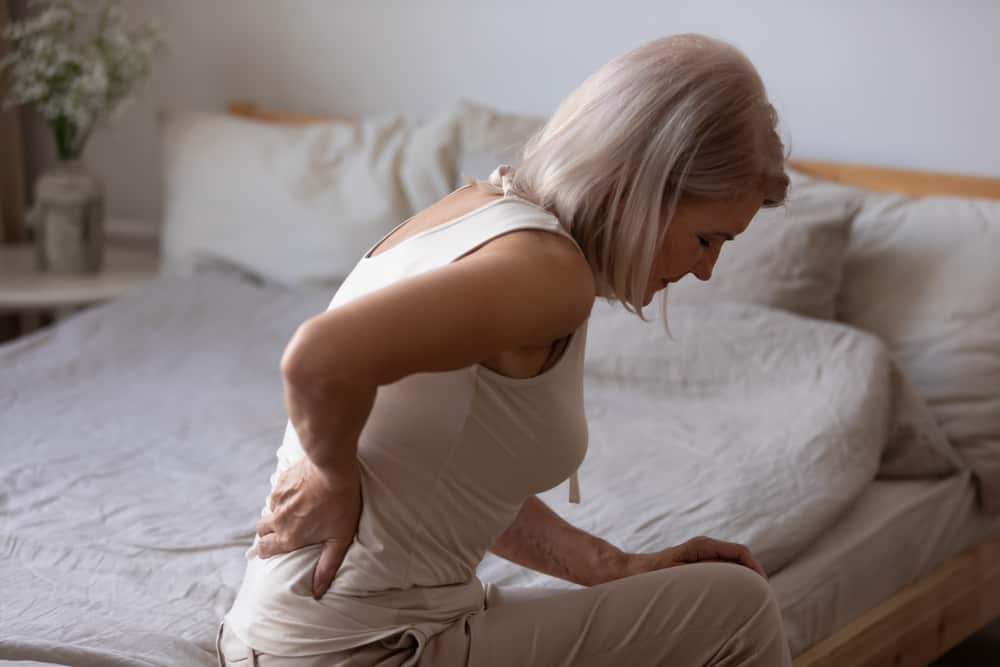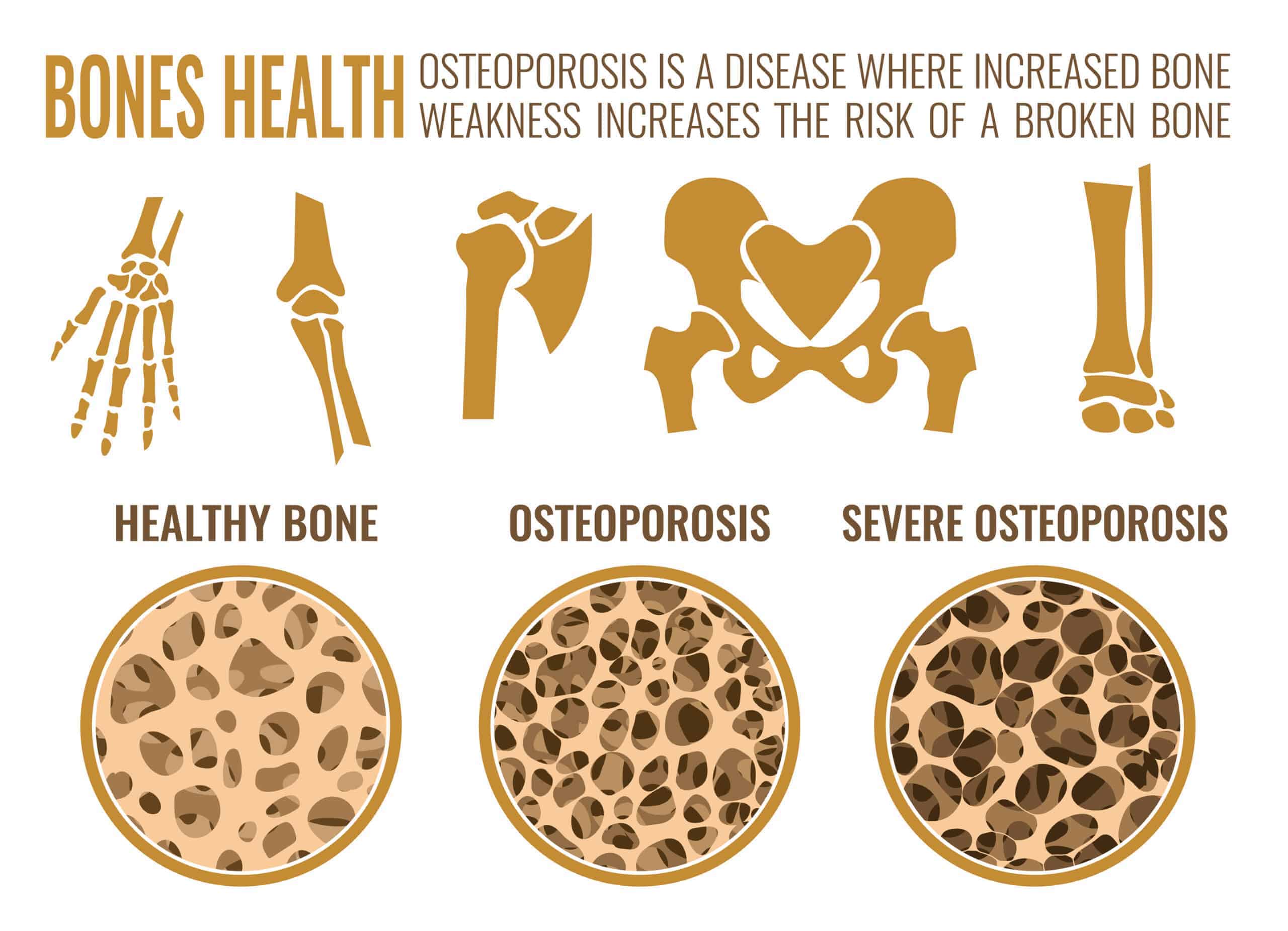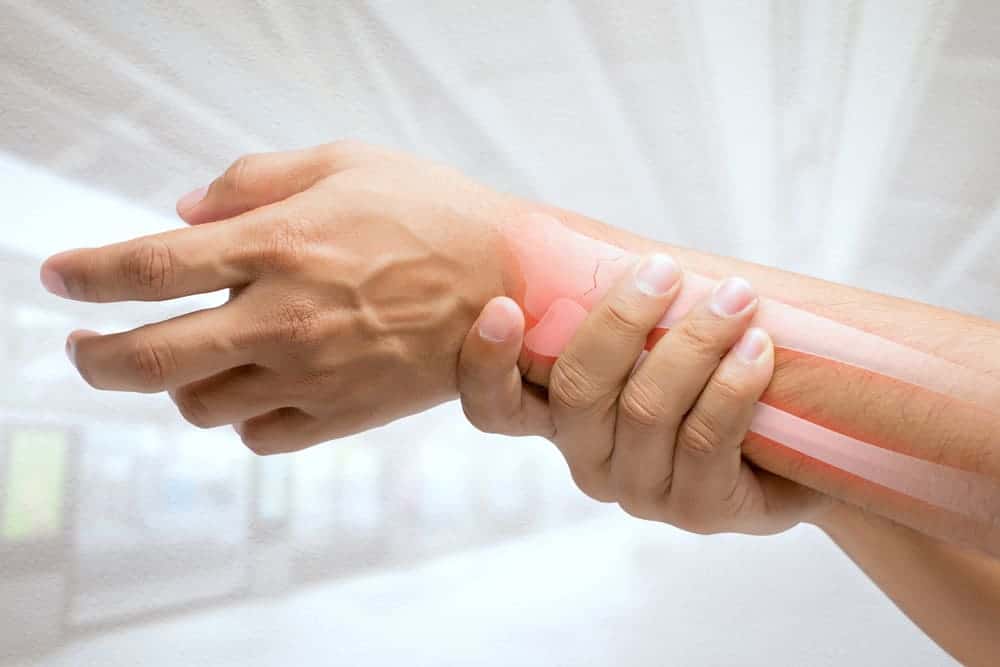Risk Factors and Symptoms of Osteoporosis
We many not think of it much, but our bones are very strong because they consist of living tissue that continually breaks down and rebuilds. As you age, it’s possible for old bone to break down faster than the building of new bone. This causes bones to have holes and become more fragile over time – this increases the risk of bone fractures. This is known as Osteoporosis.
Worldwide, osteoporosis causes more than 8.9 million fractures annually. Both men and women are at risk of developing osteoporosis, but this condition is more common in women. Osteoporosis in women is often caused by hormonal shifts that occur with aging.

Woman with back pain. Shutterstock.
Risk Factors
Common risk factors of osteoporosis can include:
- older age
- going through menopause before age 45
- being of Caucasian or Asian decent
- having ovaries removed before age 45
- having low testosterone in men
- having low estrogen in women
- taking certain medications that decrease hormone levels
- smoking cigarettes
- having a family history of osteoporosis
- drinking alcohol frequently
- not getting enough regular physical activity, particularly strength-training exercise
Here are a few symptoms of osteoporosis to look out for as you age.

Osteoporosis. Shutterstock.
Early Symptoms
Unfortunately, earlier symptoms of osteoporosis are not easily detectable. Mostly because the bone loss that happens during osteoporosis often leads to a bone fracture, and when it gets to that point it is often more advanced. A healthy bone looks like a honeycomb, so there are alway “holes” there. However, in osteoporosis, those holes get larger and causes the bone to become more brittle. This creates higher risk for bone fractures. However, there are a hand full of symptoms that could point towards the early symptoms of osteoporosis. Weak and brittle fingernails can sometimes be a warning sign to underlying bone issues. However, this may not be reliable based on daily activities like gardening, cleaning and swimming. In a study of postmenopausal women and overall bone mineral density, researchers found that low handgrip strength was linked to low bone mineral density. In addition, lower grip strength can increase your risk for falls.

Stooped posture due to osteoporosis. Shutterstock.
Loss of Height/Stooped Posture
In many later cases of osteoporosis, this is a very common symptom. The compression of the vertebrae is caused by the bone loss. It may cause a slight curving of the upper back. A stooped back is known as kyphosis. Kyphosis can cause back and neck pain and even affect breathing due to extra pressure on the airway and limited expansion of your lungs. This compression of the vertebrae can contribute to height loss. Another reason for height loss could also be compression fractures. Loss of height and stooped posture is also one of the most recognizable attributes of osteoporosis.

Bone Fracture. Shutterstock.
Fracture from a Fall
This is one of the most unfortunate symptoms of osteoporosis. Oftentimes, someone will not know that they have osteoporosis until they experience a bone fracture. Depending on the severity of the osteoporosis, minor movements could even cause a fracture; you wouldn’t necessarily need to experience a fall. Something small such as stepping off of a curb could jolt your body and cause a fracture. Of course this depends on the stage of osteoporosis. But these fractures could be a sign of fragile bones and lead a doctor to run tests for osteoporosis.

Neck pain. Shutterstock.
Back or Neck Pain
This one circles back around to osteoporosis causing compression fractures of the spine. Obviously, any type of fracture will cause pain. These fractures in the spine can be very painful because the collapsed vertebrae may pinch the nerves that radiate out from the spinal cord. The pain symptoms can range from minor tenderness to debilitating pain.






